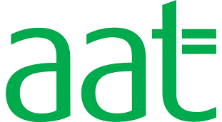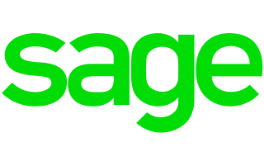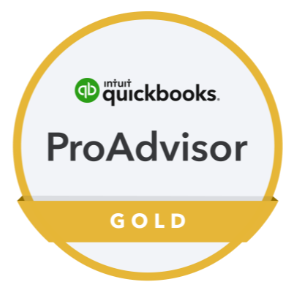Making Tax Digital
What is Making Tax Digital? Also known as MTD, the government’s programme for the future of taxation is based on using digital technology for tax records and returns.
Initially MTD started with VAT in 2019, and the next category of taxation to follow in 2026 is Income Tax Self Assessment for sole traders and landlords. You can find out more about MTD on this page.




Why has Making Tax Digital been introduced?
The answer is that MTD is a key part of the government’s plans to make it easier for individuals and businesses to get their tax right and keep on top of their affairs.
Making Tax Digital offers significant advantages for tax payers.
MTD helps you keep your tax affairs right up to date
With all relevant tax information available through your online account, tax payers will know about taxes they will need to pay at any time. As a result, business planning is easier and more effective.
You have fast, effective communication with HMRC
MTD allows businesses and their accountants to access tax information online, and to improve the way they deal with HMRC.
Single financial account
MTD provides businesses with a single, accurate digital tax account which makes planning, reporting and returns faster and simpler.
It is easy to check the accuracy of HMRC records
Businesses and their accountants have access to digital tax accounts and the information HMRC holds, making it straightforward to check the accuracy of records and resolve any issues.
However, MTD requires the right software, the skills needed for the software, and an understanding of new reporting schedules. At AMR Bookkeeping Solutions, our experts can advise businesses about all the issues surrounding the new way of managing your tax affairs.
What are Making Tax Digital deadlines?
Making Tax Digital for VAT
The first requirement to use MTD came on 1 April 2019. Since then, all VAT-registered business with a taxable turnover above eighty-five thousand pounds have had to use HMRC’s digital platform for their VAT records and returns. From 1 April 2022, the requirement extended to all VAT-registered businesses.
The right software is critical to using MTD. At AMR Bookkeeping Solutions, we advise businesses on bookkeeping software for improving business bookkeeping. Our expertise covers solutions for MTD, including Xero, Sage and Quickbooks, and we provide training on leading accounting software. To comply with MTD rules, businesses need to use software which is compatible with HMRC for VAT returns.
For more information on VAT, have a look through our guide.
Our highly respected standards mean that clients can rely on us with absolute confidence, reflected in the many glowing testimonials we receive.
Making Tax Digital for Income Tax
The next stage in the roll-out of MTD is for Income Tax Self Assessment for sole traders and landlords. MTD will be obligatory from 6 April 2026 for sole traders and landlords with total business or property income above £50,000. From April 2027, it will then be mandatory for those with qualifying income over £30,000 and from April 2028, it will be from £20,000.
You can register now for MTD if you currently complete Self Assessment returns for self-employment or income from property. You can see whether you meet HMRC’s criteria for registration here. You will not be required to submit a return before April 2026, but it makes good sense to prepare well in advance and to get to know the software and processes.
What are the Making Tax Digital rules for Income Tax?
As with preparation for MTD and VAT, it is important to familiarise yourself with what to expect when Income Tax comes under MTD. The key points are that you need to:
Keep accurate records
You must keep digital records of income, expenditure and all transactions relevant to your self-employment or property business.
Use Making Tax Digital compliant software
ou must use software that is compatible with HMRC. The tax authorities have a current list of compatible software which will be amended in the run-up to April 2026.
Sign up for MTD for Income Tax Self Assessment
Signing up for ITSA is straightforward. You do so using your Government Gateway ID and password.
Update your records every quarter
From 6 April 2026, you will need to submit details of your annual income and expenses instead of a Self Assessment tax return. Tax owed needs to be paid by the end of the January following the end of your trading year.
You can find more information in our webinar on Making Tax Digital for Income Tax.
Making Tax Digital FAQs
HMRC states that MTD is about ‘helping businesses to do their tax right’. MTD provides significant advantages for taxpayers and is also part of the government’s approach to the problem of nine billions pounds of tax lost every year due to errors.
- An accurate, up-to-date view of your tax position
- Easy-to-access information in one place
- Easy to share information with advisors, agents and HMRC
- Better information and better planning
- VAT-registered businesses with taxable profits over eighty-five thousand pounds from 1 April 2019
- Vat-registered businesses with taxable profits of between ten and eighty-five thousand pounds from 1 April 2022
- The self-employed and landlords for Income Tax Self Assessment from 6 April 2023.
Exemptions from Making Tax Digital are for:
- Religious societies
- Individuals and organisations unable to use digital tools due to age, disability or remoteness
- Insolvency
What is Making Tax Digital?
What are the advantages of MTD?
Who does Making Tax Digital apply to?
Are there exemptions from MTD?
How do you register for Making Tax Digital?
Does HMRC provide free software for Making Tax Digital?
What is Making Tax Digital?
HMRC states that MTD is about ‘helping businesses to do their tax right’. MTD provides significant advantages for taxpayers and is also part of the government’s approach to the problem of nine billion pounds of tax lost every year due to errors.
What are the advantages of MTD?
- An accurate, up-to-date view of your tax position
- Easy-to-access information in one place
- Easy to share information with advisors, agents and HMRC
- Better information and better planning
Who does Making Tax Digital apply to?
- VAT-registered businesses with taxable profits over eighty-five thousand pounds from 1 April 2019
- Vat-registered businesses with taxable profits of between ten and eighty-five thousand pounds from 1 April 2022
- The self-employed and landlords for Income Tax Self Assessment from 6 April 2026 for those with qualifying income over £50,000
Are there exemptions from MTD?
Exemptions from Making Tax Digital are for:
- Religious societies
- Individuals and organisations unable to use digital tools due to age, disability or remoteness
- Insolvency
How do you register for Making Tax Digital?
You will need compatible software and a Government Gateway User ID and password (if you don’t have one, you can create one when you sign up). Click here for details of signing up for MTD for VAT, and click here for signing up to MTD for Income Tax Self Assessment.
Does HMRC provide free software for Making Tax Digital?
HMRC has no plans to provide free software for MTD. Our experts at AMR can provide advice on the right software for MTD returns for both VAT and Income Tax.
What do clients say about
AMR Bookkeeping Solutions?

Simon Colenutt
MD at CK Office Services Ltd
“Jenny from AMR has been a great help to our company in recent months, as we moved over to using a new accounting software system. The work is always thorough, efficient, and communication is very easy.”

Owner at Akehurst Homes Limited
“Without any practical background in accounts, I found the experience and support provided by AMR to be invaluable, especially when dealing with the complex CIS returns in addition to VAT!”
Alexandra Wood
Holmes Wood Consultancy
“The team at AMR are fabulous, but particularly our bookkeeper Donna. Efficient, helpful, accurate, with a positive can-do attitude and happy demeanour. We couldn’t be more positive about working with her and the rest of her colleagues.”
See more testimonials
Our bookkeeping services
We pride ourselves on providing expert services which cover the essentials of bookkeeping as well as full information for management accounts, credit control, budgets, cashflow and taxation. In addition, we offer a full range of payroll services and support on pensions auto-enrolment. We are also experts in HMRC’s making tax digital initiative, as well as the leading digital accounting and bookkeeping software. We provide training for clients who want to use new technology.
Bookkeeping
Other Services
Payroll & Pensions
Get in touch for a free, no obligation consultation
Find out how AMR Bookkeeping Solutions can provide the right support for your business, send us your details and one of our experts will get in touch with you without delay.
Alternatively, you are welcome to contact us by phone on 01892 559480
You can also pop into our offices in Tonbridge.